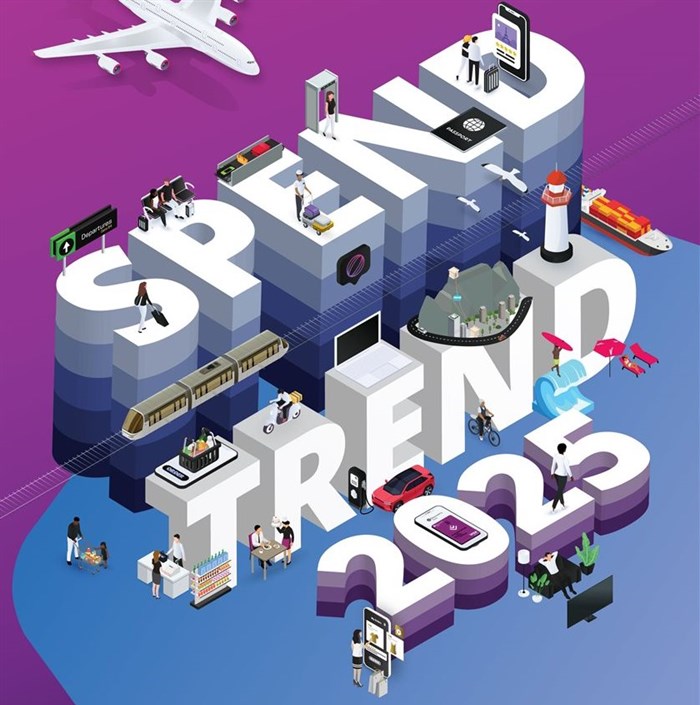
Discovery CEO Hylton Kallner on the future of spending
There is a declining brand loyalty and a shift towards value as consumers seek brands that deliver quality at competitive prices rather than paying premium prices for established names.

CEO Discovery Bank and Discovery South Africa, Hylton Kallner talks about the SpendTrend 2025 report findings (Image supplied)
This is one of the predictions for the SpendTrends for 2025. The report also found that AI will begin to inform purchasing decisions. Already AI subscriptions have increased as consumers directly access these tools.
Taking a deeper dive into these and other trends at the recent report launch at Discovery Place in Sandton, CEO Discovery Bank and Discovery South Africa, Hylton Kallner emphasises three key insights driving these trends:
- How much people spend.
- What people spend.
- How people spend.
Drivers
Kallner highlighted the drivers of spending behaviour in 2024:
- Sustained high interest rates
- Shift to digital real-time payment
- Changing safety and security risks
- Increased return to office mandates
- Broader consumption choices of digital services
- Sustained high interest rates
High interest rates are straining finances, and in the last year, many consumers accessed their retirement savings to make ends meet.
Seventy percent (70%) of spend is on groceries, retail, travel, eating out and fuel, but this varies in the different South African cities.
“While groceries is the highest across all cities, in Johannesburg retail and eating out is also high, while in Cape Town travel is high,” says Kallner.
A demand for convenience
Busy lifestyles have led to a demand for convenience, showing growth in the spend on eating out and takeout, with spend on food overall exceeding inflation.
Groceries are seeing smaller baskets but more frequent shopping. Cape Town spend is the most on groceries out of the South African cities surveyed, while for Johannesburg, eating out is the biggest spend.
However, the differentiator between eating out and grocery spend is very small.
The shift to convenience is across all age groups with an increase in online food spend with R1 out of every R5 spent is on convenience is spent online.
“Interesting this shift is not at the expense of healthy shopping. However, while healthy food comprise 40% of a basket at the start of the week, this falls to 29% by the weekend,” expands Kallner.
Online shop still healthier than physical store shopping.
Travel taper off
Travel growth has tapered off with an average spend stabilising around post-pandemic levels.
The most expensive route is George to Johannesburg. The flights most booked are on Monday and Sunday, which reflects the semigration.
Later in the evenings (7 pm) are the cheapest Johannesburg to Cape Town flights, with Friday afternoon most expensive to Cape Town from Johannesburg.
Johannesburg to Paris is the most expensive route internationally.
International visitors to South Africa love Cape Town with half of visitors flying into Cape Town. The top five countries' visitors are the US, UK, UAE, Germany and Canada.
- Shift to digital real-time payment
The reliance on and usage of cash have declined and have been replaced by real-time digital payments.
“While cash has not disappeared, the rate of the use of digital payments has been rapid. “Since PaySnap launched in 2023, it has seen 136 million transactions at a value of R100bn,” says Kallner.
- Changing safety and security risks
Convenience and security are driving the digital wallet and virtual card adoption, with 60% of Discovery Bank clients saying they are more worried about banking security than a year ago.
- Increased return to office mandates
Fuel spend has increased as motorists heeded the back-to-the-office call. Sixty percent (60%) of Discovery Bank clients are back in the office five days a week.
“Discovery Bank clients are spending 35 hours a month in their car doing an average of 1,100 km in a month,” adds Kallner.
- Broader consumption choices of digital services
Omni-channel shopping is still growing, with spend on international platforms increasing significantly. This trend is set to continue. Ninety-five 95) percent of South Africans buy off local platforms, and 77% buy from overseas platforms.
South African consumers are also adopting a variety of new streaming services, including AI.
“Last year saw the rapid emergence of AI subscriptions and an accelerated rate of adoption as these services are directly accessed by consumers,” says Kallner.